#demographic history
Note
Not the original Anon but I think the rise of Europe meant that after the Black Death Europe underwent the Renaissance and Industrial Revolution and became a global power so did the former create the conditions for the others?
I sort of thought that was what anon was talking about, so I might as well answer it here. TLDR: there's a big debate about this, and historians have not come to a consensus.
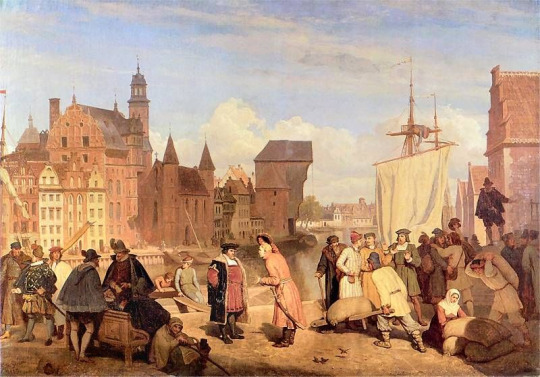
When I was an undergraduate, I took a course on the origins of capitalism by the late Professor J.W Smit, and one of his lectures was on the theory that the Black Death created the preconditions for the Commercial and then Industrial Revolutions, by essentially killing about 30-50% of the population while leaving their property (land, livestock, buildings, improvements, liquid capital, etc.) intact - thus creating a much higher rate of capital-per-capita that could then be invested in more capital-intensive, higher value-added industries.

On the other hand, a lot of medievalists who study the High Middle Ages argue that the period from 1000-1300 saw substantial economic growth due to population growth that enabled both an expansion of agricultural production and the first wave of post-Roman urbanization, and that the Black Death was an enormous setback for huge swathes of Europe who would not recover their pre-Plague levels of population and economic production until the 19th century.
While this might sound like squishy centrism, I think the reason that there is no consensus is that both sides are simultaneously right and wrong. It is true that the Black Death made profound socio-economic change possible by disrupting serfdom, raising wages, and deepening capital pools. It is simultaneously true that the Black Death also created a downward spiral of lower population leading to lower production leading to lower population, which could cripple entire regions for centuries if they were unable to adapt to changing circumstances.
#history#historical analysis#black death#european history#commercial revolution#industrial revolution#economic history#demographic history#medievalism#medieval economics#economic development
24 notes
·
View notes
Text

Largest religious denomination in the USA by county
Btw this doesn’t show atheism/irreligion, so like in Los Angeles, 60-70% of religious people are Catholic, it’s not that 60-70% of Angelenos are Catholic, just the ones who profess a religion.
#map#maps#cartography#usa#data#americas#geography#religion#catholic#Catholicism#orthodox#christ#christblr#chart#demographics#theology#history#counties#states#California#Texas#Florida#New York#nyc#Mormon#LDS#Mormonism#protestantism#evangelical#evangelicals
746 notes
·
View notes
Text
#watcher#watcher entertainment#shane madej#ryan bergara#steven lim#puppet history#ghost files#mystery files#too many spirits#if you’re wondering why i’m doing this#it’s because i’ve seen like thirty posts#saying watcher fans are mainly broke college student#and i’m wondering how much of that is actually true#or if it’s just perception#of course the results are going to be skewed by tumblr’s demographic#but i’d like to see nonetheless#i would love to actually see the youtube analytics#but i suppose this is the next best thing#i hope this post gets at least a little traction
158 notes
·
View notes
Text

@rfswitchart , what you have just said is one of the most insanely idiotic things I have ever heard. At no point in your rambling, incoherent response were you even close to anything that could be considered a rational thought. Everyone in this room is now dumber for having listened to it. I award you no points, and may G-d have mercy on your soul.
https://minorityrights.org/country/palestine/
Close to 99 per cent of Palestinians are Muslims, with Christians making up less than 1 per cent of the population (PCBS, 2017) with small numbers of members of other communities including around 400 Samaritans resident in the West Bank.
#historical revisionism#palestine#israel#islam#judaism#christianity#jumblr#billy madison#facepalm#demographics#alternate universe#alternative facts#history#history of palestine#gaza#west bank#free palestine#free palestine from uneducated westoids
130 notes
·
View notes
Note
I’d love to know about Yulma and how important it is to representation in shounen manga
This has been sitting in my askbox for a couple months (because I am incapable of punctuality), but anon sent this to me back when I was talking about Yulma over on my vnc blog. For those unaware, Yulma refers to Yu Kanda and Alma Karma from the manga D.Gray-man.
So the thing is, to be honest, I don't know if you can say Yulma is/was important for representation. They don't tend to get brought up as an example of representation (except by diehard d.gray-man fans like me, lol) in shonen, and their whole thing is complicated enough that I feel like the queerness of it all flies over a lot of people's heads.
However! They're very important to me personally, and I do think it's kind of remarkable their story came out in like 2010. Because even though their queerness gets overlooked a lot, it's like. really there no matter how you interpret it.
The short version of their very complicated story is that Kanda and Alma are a couple who were resurrected into new bodies. Alma was a woman when they were originally together in their past lives, but is physically male in the present. Kanda is still very much in love with them by the end of their story, which, depending on the reading, makes Kanda very bi and/or Alma very trans.
This sound like something you want details on? If so, let's talk about how D.Gray-man's fan favorite edgy badass toughguy character briefly became the star of his very own heart-wrenching tragic queer romance.
Here's a brief crash course in Yu Kanda and Dgm for the uninitiated:
D.Gray-man is a manga about a group of exorcists (in the loosest and most anime sense of the term) in the 1890s fighting a holy war against mechanical demons powered by the souls of the dead. There are two things you need to understand about this plot for me to explain Yulma:
The Black Order, the secret branch of the church that exorcists work for, has a long history of committing horrific human experiments to further the war effort.
Due to complications of world building, only a tiny number of people can become exorcists, and tracking down new ones is extremely difficult.
Yu Kanda is one of the exorcists, and though not the actual main character (that's the lad in my icon), he's a very important secondary character. Arguably he's the most important secobdary character, since he's the main guy's biggest foil and the first character to play deuteragonist in a major story arc. He's also a huge fan favorite. The character popularity polls that Jump used to do always had him and the mc going back and forth over who won #1 most popular.
Kanda was also a classic edgy toughguy character. His first two scenes are him almost murdering the main guy because he thinks he's an intruder, then complaining about people grieving for their friend too loudly. He never smiles. He argues with the righteous mc about wasting time/energy protecting civilians. He threatens (and delivers) violence on anyone that annoys him. He looks like this:

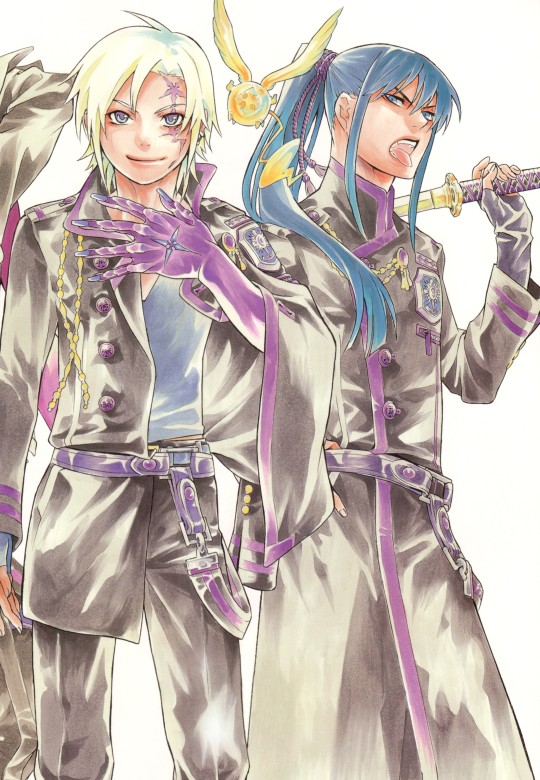
TLDR; Kanda was an adored-by-fans mean badass archetype in a 2000s shonen manga. Not generally the guy you peg for starring in a piece of queer romantic storytelling.
And for the entirety of the original anime adaptation's 103 episode run, for the first 188ish chapters of the manga, you do not learn a single thing about his early life. You learn he joined the Black Order very young, and you meet the mentor that took him in at that point, but although there are little hints, a couple cryptic mentions of him searching for a certain person, his early origins remain a complete black box.
Then came the Alma Karma arc.
This is the point where I start getting into spoilers.
To make a very long story short, the Alma Karma arc reveals that Kanda is one of the Black Order's human experiments. The Order ran a secret project 9ish years before the start of the series in which they essentially tried to re-use dying exorcists (since finding new ones is so hard). They took the bodies of dying or recently deceased exorcists and harvested their brains, implanting those brains into new magically grown child bodies.
Key to this project—the second exorcist project—is that these newly grown second exorcists were not supposed to remember anything from their previous lives. Kanda, however, recovered a few hazy memories from his past self. Most importantly, he can recall an unclear image of the woman that his past self was in love with. This memory gradually becomes Kanda's reason to live. He wants desperately to find and meet that person.
Now, aside from Kanda, there was one other successfully revived second exorcist. This was a boy named Alma Karma.
Over the course of their brief shared childhood, Kanda and Alma become extremely close. However, due to a series of horrible events that I'll spare you the details of, Alma is eventually driven to murder-suicide. He wants himself and Kanda to die together to spite the Order, and Kanda almost lets him do it.
The one thing that keeps Kanda from letting Alma kill him, the thing that drives him instead to kill Alma, his most beloved and only friend, is that he can't bear to die without finding that woman again.
Have you figured out the twist yet?
9 years later, in the present, Kanda discovers that he didn't actually quite kill Alma. The Order kept Alma secretly half-alive in order to do more dubious experiments. And, more importantly, when they meet again, Kanda discovers the truth. The woman that he's been searching for his whole life, the woman he's in love with, the woman he tried to kill Alma in order to find, was also killed and made into a second exorcist. And her brain was placed into the body of Alma Karma.
After quite a lot more violence and tragedy, Kanda and Alma end their story arc by running away together on their deathbeds. Alma dies, for real this time, in Kanda's arms, and his last words are to tell Kanda he loves him. These words are presented as something Kanda hears from both the boy and woman versions of Alma's soul.
So! At the end of a very long and complicated story, one thing holds true: Kanda and Alma are in love. As passed down from their past selves, they are specifically in romantic love. They were a couple. And to speak as a fan, the sheer absolute devotion to how Kanda's love for Alma is presented is seriously intense and moving.
Now, given the absolute hell that is Alma's life, gender identity is frankly the last thing they have time to worry about, so it's hard to say how the whole "literally a woman's brain in a male body" thing might have settled for them if given time to think about it. But that is inherently a pretty trans narrative. And given the whole Alma gender situation, there's simply no reading of their whole situation where neither of them is queer.
If you take present day Alma as a guy, which is more or less how he's presented in canon (though again, who knows how he would've felt about that male body in different circumstances), then congratulations! You've got mlm in your shonen manga. They were straight in a different life, but now one of them's a dude, and they are still deeply in love with each other. They've even got not one but two "let's forget it all and run away together" scenes, just as every mlm couple seems to have.
On the other hand, if you go with the angle that Alma's still a woman based on her mind/soul, even in her new body, then Kanda may not be canonically queer, but Alma is inarguably trans. Again, literally a woman's brain in a male body. It may not be how most people end up trans, but that doesn't change the facts of her situation.
You see what I mean about how they're undeniably queer, but also kind of easy to miss? There's so much other insane shit going on in their story that Alma's whole gender situation can get passed over. Plus, you can look online to this day and find people arguing that Kanda's not "technically" explicitly in love with the present day male version of Alma, since he doesn't 100% unambiguously say as much. I love reading comprehension.
Also! As a possible extra reason for why people don't talk about them much, the official English translation of the manga translated Alma's final "I love you" very differently. There's always a lot of nuance and argument when it comes to translating "大好き" into English, but given the full context of their relationship and the scene it's in, Viz's handling really sets off the censorship bells in my head.
Here's the different versions (Japanese then fan then official), if you want to compare:
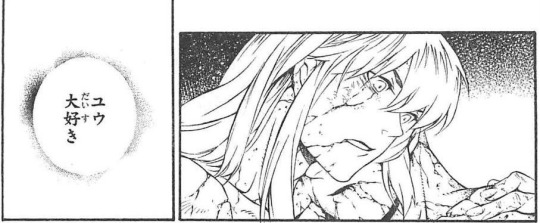
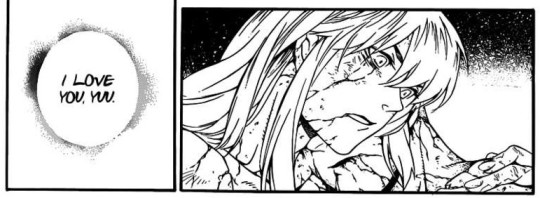

Nothing more classically queer than censorship by way of questionable translation 🙃.
At the end of the day, Kanda and Alma are in kind of a strange middle ground. They're each in love with the other one, but the whole second exorcist brain transfer situation makes it complicated enough that people argue their feelings aren't explicitly romantic (and thus not gay) in the present. Alma is literally a woman's brain implanted in a male body, but we don't have time to dwell on the gender complications of all that because of the hell that is the rest of their life. They're canon but not canon—queer people whose stories don't have space for them to be queer.
However, given that all this messy, tragic ambiguity was published in a fairly popular shonen manga back in 2010, it still feels kind of remarkable to me. Alma is somewhat an antagonist (it's complicated), and he dies at the end of his arc, but once again, Kanda was/is the fan favorite! And when he re-enters the main story after Alma's death, he's more important than he's ever been, and his history with Alma continues to be a huge part of his character.
Katsura Hoshino took the much-beloved edgy toughguy character from her long-running shonen series and, after keeping his origins secret for such a long time, confirmed that his whole life has revolved around love this entire time. Almost every facet of his character can be traced back to his love for his lost best friend or his yearning for his past life's missing partner. And then she reveals that the best friend and the partner are one and the same.
You can go back and forth about the degree to which they work as representation, but in any case, I think their story is something people ought to know about. It's romantic and it's heart-wrenching and it's fucking wild, especially given the context in which it was published (a Shonen Jump spinoff in 2010). I never see anyone besides the few remaining hardcore dgm fans talk about them, and I think that's a shame.
So anyway, that's tale of one of the most insanity-inducing romances I've ever seen put to paper. I love queer people.
Here's some choice pages if you want to cry with me (the last two are a sequence):
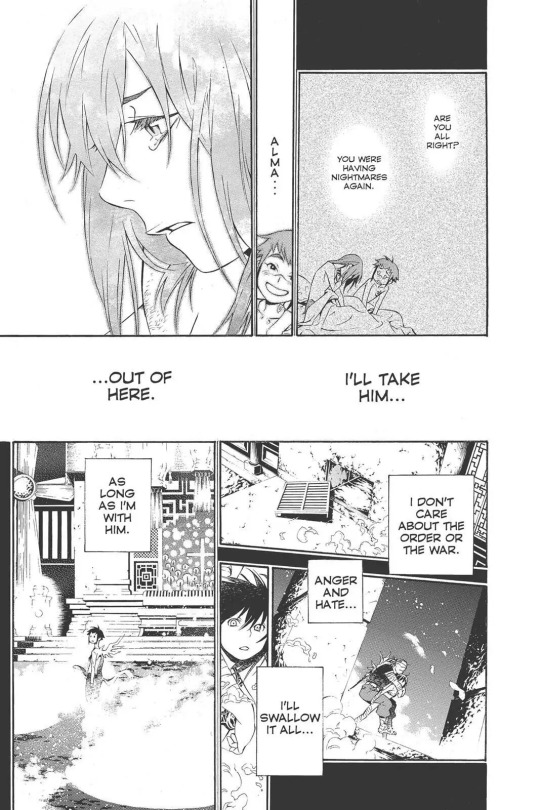
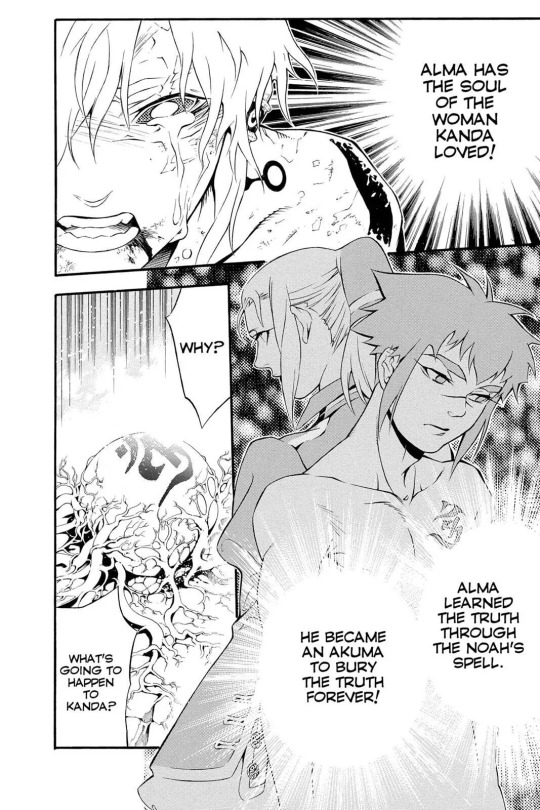
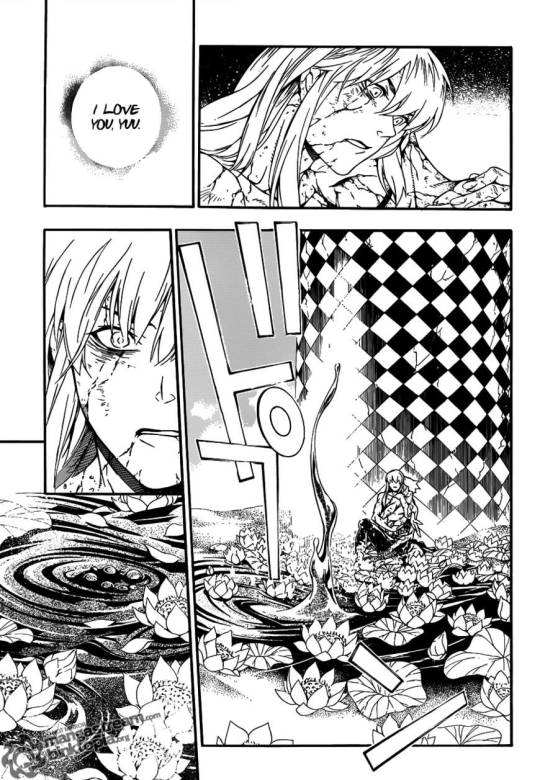
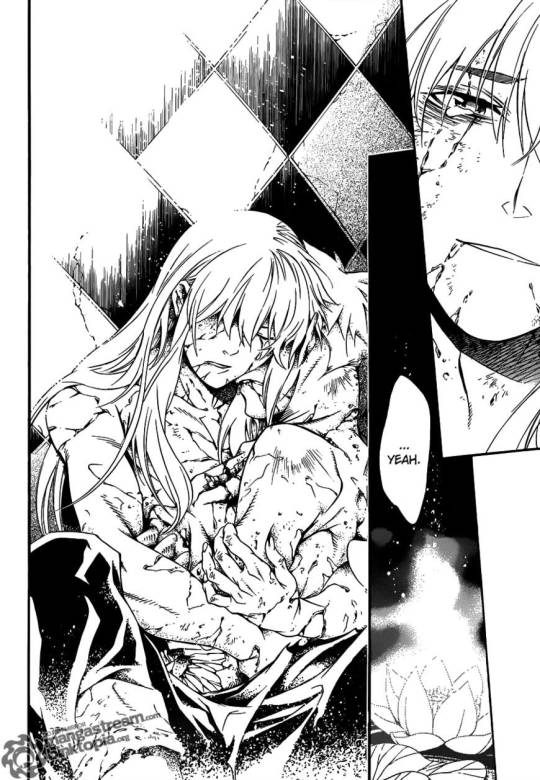
#followers!! I know my demographic#I know that most of y'all are Tragic Queer Romance Enjoyers#and if that describes you. you should read this post#come learn about a truly wild piece of manga history#I bring you the gift of discovering Yulma without having to read almost 200 chapters of shonen manga for context#don't pass this up <3#dgm#d.gray-man#yu kanda#yulma#alma karma#invasion of the frogs#also I really hope that at least one of the besties reads this and has a Realization about who/what my queue tag is a reference to#maybe I flatter myself to think that anyone remembers what my queue tag is. but I just think it would be funny <3#also also. I really did not intend for this post to turn into an entire essay when I started writing it#so uh. whoops#ID in alt text#anon#ask
175 notes
·
View notes
Note
Neuralink methods are unsafe at this stage given the animal deaths and shouldn’t be greenlit for human clinical trials. Calling it eugenics because of that is a bit much though.
There are other research projects doing similar, but safer, methods to help paralyzed people though. I hope people try to get on these research lists and don’t turn to musk out of desperation
It isn’t really a reach to call a procedure with over 60% mortality rate being marketed as a miracle cure to the disabled an example of eugenics. Frankly, there is a stronger word I’m tempted to use for it.
I don’t believe Elon Musk is unaware of the dangers. I don’t think any of the high profile scientists he hired are either.
At absolute best faith I can see Musk simply not caring about the risk and just using this as a desperate attempt at making back some money since he lost so much with twitter and SpaceX.
That’s giving him the most benefit of the doubt imaginable.
However, I would not call it overly cynical to suspect that this may be intentional. Is Musk really stupid enough to just think it’ll be fine because he’s the main character? Yeah, that’s plausible. It’s not any less plausible to say there’s an ulterior motive. Not when he rubs elbows with far-right figures often. Not when he’s a billionaire rich on his parents’ bloodied slave money.
I don’t trust a white man who grew up reaping the benefits of apartheid to be a friend to the disabled. I think the goal in this project has less to do with improving quality of life for the disabled and more for making the disabled less inconvenient to their abled caretakers. It’s very much giving 21st century lobotomy.
#Neuralink#eugenics#there is a long history of far-right monsters luring specific demographics to their horrible deaths by promising improved QoL#just saying#I don’t trust that at all#a brain implant attached to the temporal lobe is frightfully dangerous#and I don’t only mean because of the incompetence of the butcher shop surgeons either#if you can control the chip and it’s connected to the internet#then other people can use that chip to control you#again assuming it ever worked
94 notes
·
View notes
Text
Actually, I really wish Tumblr as a whole was less comfortable using feminizing language for gay men, especially gay East Asian men.
#unforth rambles#brought to you by the person i saw call chu wanning 'mo ran's mother' and the person who defended them#putting aside the question of accuracy re his role in mo ran's life#the words parent and father both exist yall#like idk but also wtf#see also girlboss and such being applied to gay men#idk i feel like im in the vast minority on this one#but my whole life ive seen gay men feminized in real life against their will#no matter how masc they were or wanted to be everything became fem#maybe im just to old to be with the times on why this is cute and funny abd okay#but given tumblr demographics and all#like shit like this is imo why so many women and afab nb people in fandom get accused of fetishizing#we older queers remember when doing this was considered disgusting homophobia actually#and imo it goes double or triple when they gay men in question are east asian#i really wish we could just fuckin stop#to be clear im not saying it IS fetishizing im saying i wish there was more awareness of the history of forced feminizing language#being used towars gay men in general and toward east asian men regardless of sexuality#for a lot of people i gotta think the knee jerk reaction to this kinda language being used is these context isnt teehee how cute#its ew who would say that#anyway i blocked op on the mo ran stuff but it still left a bad taste in my mouth
26 notes
·
View notes
Text

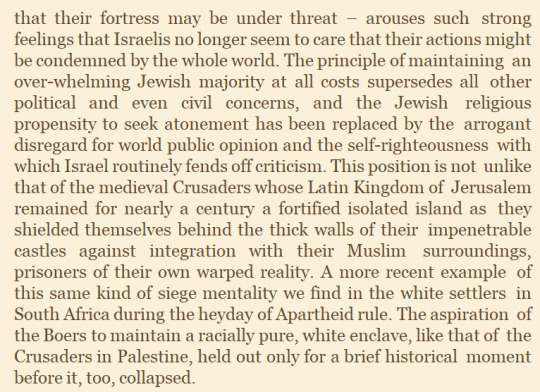
The Ethnic Cleansing of Palestine - Ilan Pappé (2006)
#The Ethnic Cleansing of Palestine#Ilan Pappé#Palestine#Israel#Free Palestine#Free Gaza#ethnic cleansing#zionism#nsnv#colonialism#atypicalreads#politics#history#state of israel#ideology#nonfiction#Ilan Pappe#population problem#demographic problem#jewish israelis#arabs#crusaders#south africa#apartheid#jewish majority#zionist project#unfounded fears
37 notes
·
View notes
Text
#alexander hamilton#hamilton musical#1800s#1700s#18th century#amrev fandom#amrev#american history#american revolution#demographics
16 notes
·
View notes
Text
The reason I post on Tumblr is that I'm trying to spread the news about the Iran revolution and my targeted audience is non-iranians around the world. It's a fact that people of different nations mostly know each other by nationalities and not subgroups and ethnicities. For example, I know people from China or Russia or Argentina as Chinese and Russians and Argentines, but I have very limited knowledge about the cultural and linguistic diversity within different countries. I know about some ethnic groups through media or documentary programs, and I know more about the people of neighboring countries because of proximity and common grounds, but you can't expect me to know the demographics of every country around the world, and in return, I don't expect citizens of other countries to know the details of existing ethnicities in Iran, a country that has been isolated and pushed out of pictures for decades. With all these said I like to give very basic information about the ethnic structure of Iran's population.

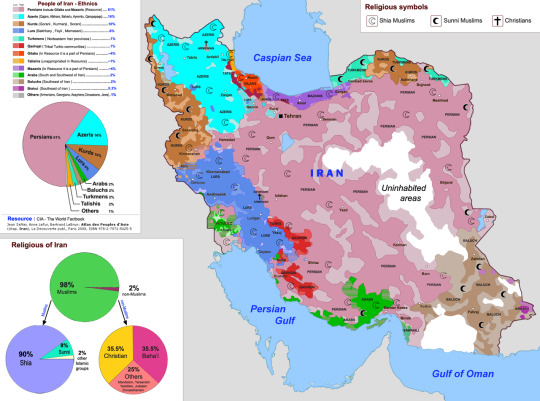
Ethnic map of Iran
Iran has always been a multi-ethnic, multi-racial, multi-culture, and multi-lingual nation. Iranian is the nationality and not an ethnical or racial identity. Persians, Kurds, different branches of Turks, Balochs, Lurs, Arabs, Gilaks, Mazanis, etc, etc, are the racial or ethnic identities that have made Iran's body. These ethnic groups have their own language or dialect, their own culture and food, costumes and urban legends, and in some cases particular religion. This makes Iran a very colorful country, which obviously can be a place of wonder but also trouble.

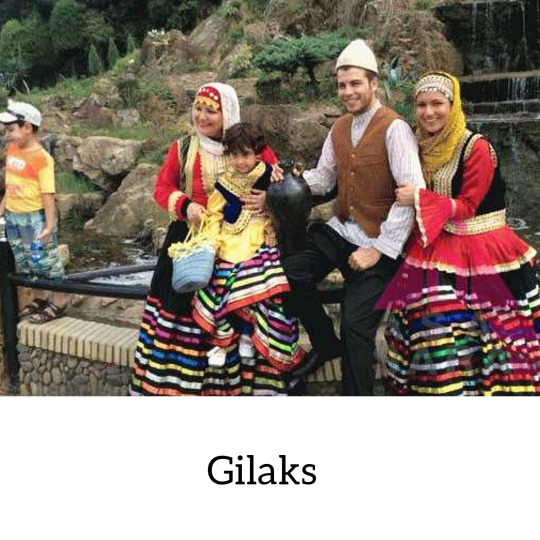
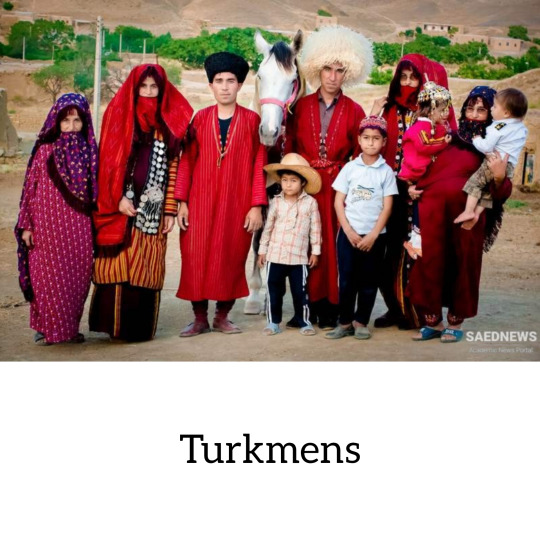
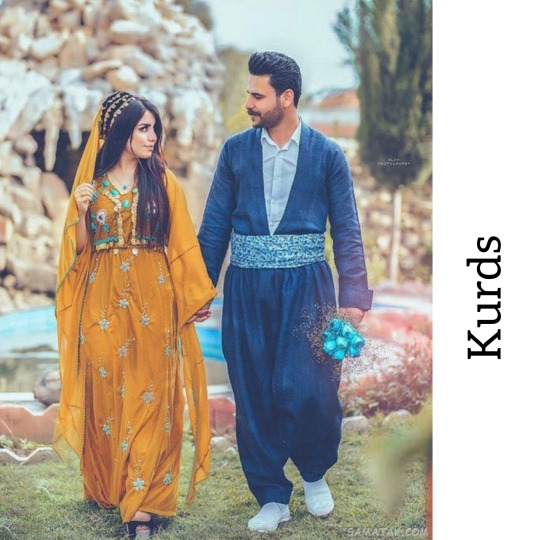
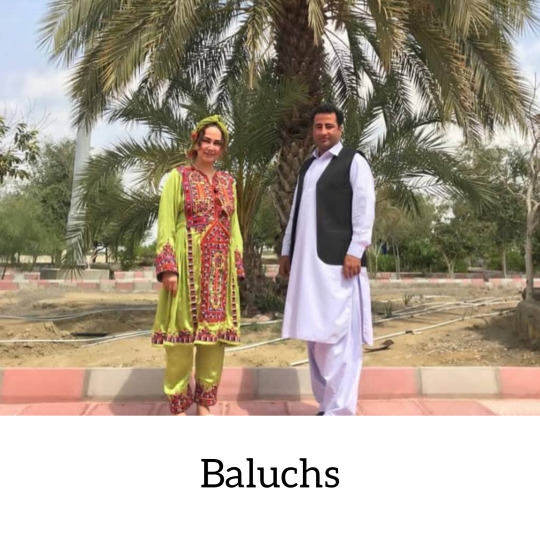
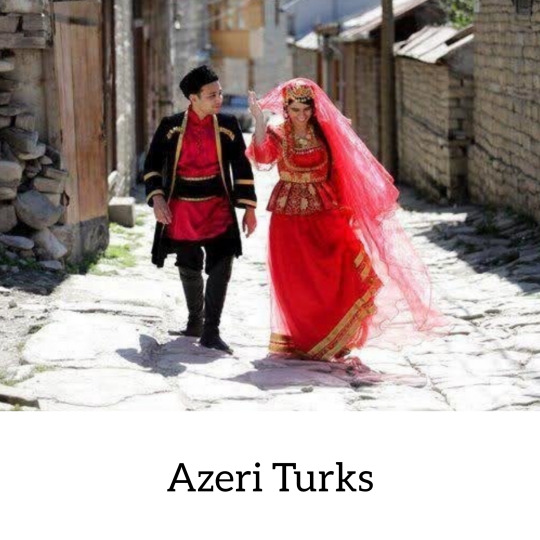
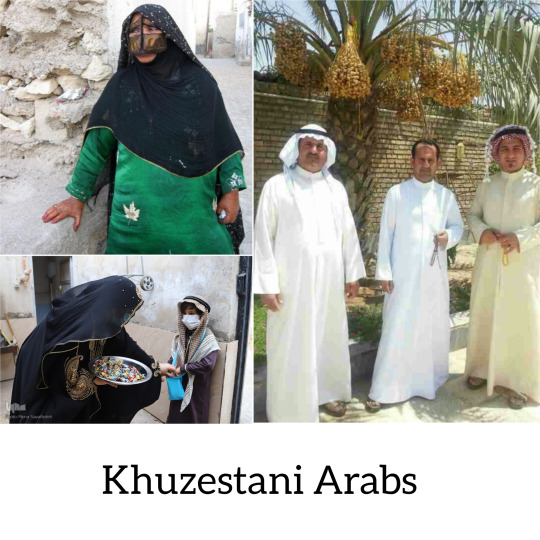
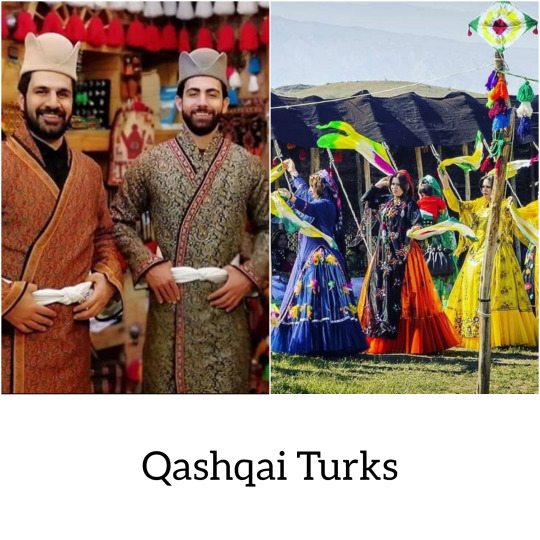

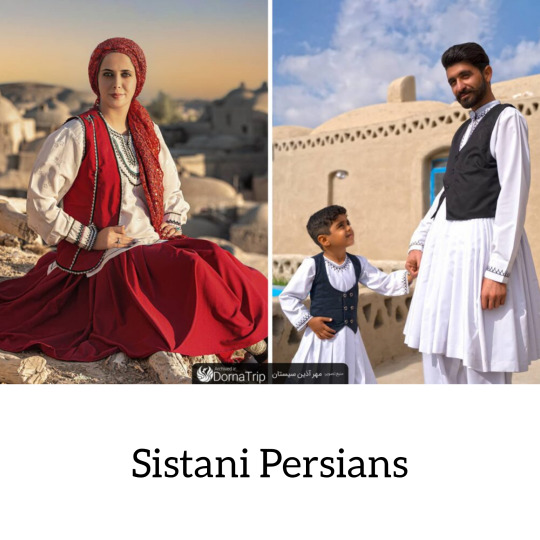


Some of the Folk Costumes in Iran
The relations among these ethnicities and their relation with the capital and the ruling system through history is complicated and differs from region to region, dynasty to dynasty. As you might know, the country you know as Iran today is the remains of an old empire that has gone through many uprises and downfalls, wars and invasions, and rebordering. Here's a quick video of how Iran's borders have changed through history; got bigger, shrank in size, and moved east and west.
youtube
The trouble with having so much variety within a country is the unpleasant manifestation of racism, favoritism, and discrimination. This problem has gotten a lot worse under the islamic republic regime. Even though favoritism and racism by the government have existed to different degrees in previous dynasties, the Islamic Republic took it to another level and since it's a theocracy, they added the element of religion stronger than ever to the discrimination mix.
Currently, in Iran, the uneven distribution of wealth and resources, and the government's neglect in many provinces and cities have made a huge gap between prosperity levels in crucial cities like tha capital, Tehran, and everywhere else. Tehran currently is the most populated city in western Asia. It's actually overpopulated, and this overpopulation is causing many environmental problems like air pollution in the city. The main reason is immigration because of the concentration of facilities and opportunities in the capital in contrast with non-existent facilities in other areas. Many people, including my family, have moved to Tehran, temporarily or permanently, to get a better chance at education or finding a job.
Apart from financial fairness, the islamic republic has been dead set on destroying ethnic identities in Iran. Banning the writing, reading, and learning of native languages at schools is one example. In many cities around the country, Persian is not the first language of daily communication. Persian as the official language is the mediator language that makes it possible for people from different regions to communicate. Different accents of Persian are the main and only language in many cities. Some cities are bilingual, but in others, Persian is like English in European countries, just a mediator, not the main native language. Almost everyone can understand and speak Persian, but native languages are the preferred language of daily life in cities with the majority of that ethnic population.
Another example is the restriction on wearing native clothes. In this one, the Islamic Republic hasn't been completely achieved, but they've been able to pale the usage or change the original form of most ethnic styles. For example, to make all the Iranian women uniformly dressed, they successfully changed the colorful veiling of Baloch women to a Black chador.
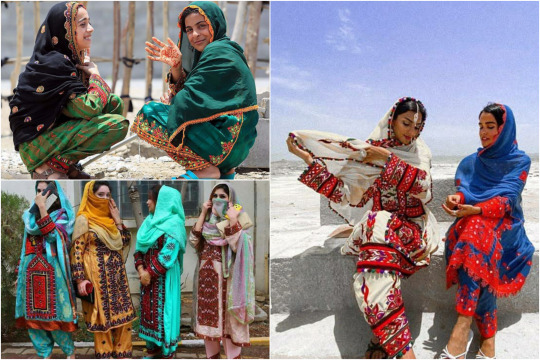

The original colorful clothing of Baloch women vs the black chador Islamic Republic has forced on them
Last but not least, based on religious beliefs, cities with the majority of non-shia muslim populations face discrimination times and times worse. Lots of Kurdish and Baloch cities have a majority of sunni muslim people. In the recent protests, the level of oppressing violence these cities have faced is far worse than in other states. Where in Tehran they shoot us mostly with shotguns, they only use battle rifles in Kurdistan and Zahedan. In only one day, Bloody Friday of Zahedan, they killed at least 96 Baloch people. Baloch people are also the first group of arrested protesters the regime has started executing. They're being murdered by the regime everyday now. These were only discriminations they're faced during the protests. A region with many metal mines like gold, and various industries is in so much poverty you'd think it's a war-struck place. Poverty, lack of clean drinking water, and identity paper restrictions are some of the examples of problems in Sistan and Baluchestan province.
In Kurdish cities the regime brought Tanks and DShK to suppress people, as if a foreign army has striked. People of Kurd never accepted the Islamic Republic regime and have been fighting its authority for decades now. Mahsa Amini, as you probably know by now, was from a Kurdish city named Saqez. The protests started in front of the hospital she passed away in, in Tehran, but it turned into full on revolution at her funeral, in her homeland, where Kurd women took their headscarves off and chanted "jîn, jîyan, azadî".
Fighting regional and racial discrimination in the free democratic future of Iran will be another obstacle our nation should deal with alongside women's rights, children's rights, LGBT rights, and working group rights.
#Youtube#iran#mahsa amini#iran protests#human rights#iran revolution#feminism#politics#ethnicfashion#racism#sexism#history#demographic groups#middle east#muslim women#shia muslims#sunni muslims#women's rights#tw violence#islamic republic vs iran#police brutality#iran explained#background information
126 notes
·
View notes
Note
Was Genghis Khan/the Mongol Empire particularly brutal/inhumane by the standards of medieval warfare?
Brutality was not unknown in medieval warfare - look at the accounts of the First Crusade and you'll see plenty of massacres of civilian populations - but I would say that Genghis Khan and his lieutenants were organized and systematic in their brutality in a way that we would not see again until the industrialized total warfare of the 20th century.
Just to give a few estimates: scholars estimate that the population of China shrank by between 30-60 million people (roughly 50% population loss) following Genghis' invasion of the Xia and Jin; similarly, following the Mongol invasion of the Khwarazmian Empire in 1219, according to one estimate the population of Persia may have dropped from 2.5 million to 250,000 (roughly 90% population loss). The CIS estimates that Genghis Khan's campaigns were so destructive that they reduced C02 emissions by 700 million tons.
And all of this was done by hand. After a rebellion or the surrender of a city that had resisted Mongol rule, Genghis' army would "measure against the lynchpin" - i.e, the male population would be marched past a wagon, and if their heads were taller than the lynchpin of a wagon wheel, they would be beheaded. Men with swords in their hands would do this awful, bloody work all day, and the entire male population of a city would be paraded by, and the men would do their work. The rest of the population - artisans and craftsmen were usually exempted, as were the young, as were women - would be enslaved and deported back to the heart of the empire en masse.
But as bad as this kind of massacre and forced migration could be, the biological warfare and deliberate destruction of irrigation systems was much worse. If you survived the battles and the sieges, and there was a good chance that you might if you weren't a soldier and if your city surrendered without putting up a fight, the odds that you would die as a result of famine - caused either by the destruction of irrigation systems, the burning of fields, or the loss of agricultural workforce - or plague (thanks in no small part to malnutrition-weakened immune systems) were high.
55 notes
·
View notes
Link
According to open source researchers, soldiers with roots in poorer regions such as Buryatia and Dagestan are disproportionately represented among Russian casualties in Ukraine.
“Most of the soldiers and officers of the ground forces and the airborne forces come from poor Russian towns and villages,” military specialist Pavel Luzin told Al Jazeera.
“This social-economic stratification has a long-term tradition in the Russian armed forces because young men from the cities with relatively good education serve in other military branches … but the infantry consists of badly-educated soldiers from poor families and regions.”
Buryatia, in Siberia, was once a part of Mongolia that was conquered by Cossacks in the 17th century.
“We can’t determine our own politics – if we had a real federation, the head of our republic could say no, Buryats won’t fight in this criminal war. But he keeps providing cannon fodder for Putin,” Victoria Maladaeva, of the Free Buryatia Foundation, told Al Jazeera.
“Buryatia, like the other ethnic republics, is governed by the colonial policies of Moscow,” Maladaeva continued.
“Our languages and history are disappearing off the face of the Earth, while Moscow sucks all the money and resources out of the provinces. Moscow is a beautiful city but it’s such a facade of all of Russia, because if you go just a little further, the houses are falling apart, there are no roads, there’s no work.”
#russia#ukraine#war#2022#putin#demographics#ethnic#population#populations#buryat#buryatia#dagestan#chechen#chechnya#russian federation#military#history#racism#colonialism#really interesting article#applies to many different militaries
186 notes
·
View notes
Text
The U.S. Secret Service has released a first-of-its-kind report that analyzes 173 mass attacks that took place in the country from 2016-2020.
It's the first time the agency has put together trends collected from five years of data; the report examines everything from when in the year the attacks took place, to behavioral changes exhibited in the attackers. The report, which comes from the agency's National Threat Assessment Center, looked at attacks that harmed at least three individuals, not including the attacker.
The report comes just days after two shootings in California in Monterey Park and Half Moon Bay killed a total of 18 people. So far in 2023, there have been 39 mass shootings.
Lina Alathari, chief of the National Threat Assessment Center, said she hopes the research and guidance provided in the report can help prevent future mass attacks.
"We must do everything we can to prevent these, which is why we're putting out this research for you. There is no community that is immune from this," Alathari said.
TOP DATA POINTS FROM THE REPORT
• LOCATION: Most of the attacks took place in a variety of public and semi-public spaces across 37 states, and Washington, D.C. The most common locations for an attack were businesses, including restaurants and retail.
• TYPE OF WEAPON USED: 126 of the attacks, or 73%, involved the use of one or more firearms. In nearly 1/4 of the attacks involving firearms, at least one of the firearms was acquired illegally by the attacker.
• DEMOGRAPHICS OF ATTACKERS: 96% of the attackers in the study were male. The USSS says that this finding is consistent with previous analyses of mass attacks. 57% were white and 34% were Black.
• CRIMINAL HISTORY: 64% had a prior criminal history, not including minor traffic violations. 41% of the attackers were found to have a history of domestic violence, but only 16% if those individuals faced domestic violence charges.
• ONLINE PRESENCE: A majority of the attackers had a identified presence online, and nearly one-quarter were found to have conveyed "concerning communications" such as threats, and posts about suicidal ideations, previous mass shootings, violent content and hatred toward a specific ethnic group.
• STRESSORS: Nearly all the attackers experienced "at least one significant stressor" within five years of the attack, most of which were issues with family and romantic relationships. 20% of the attackers experienced some kind of childhood trauma, including physical or sexual abuse, entering foster care, living in a refugee camp, or the death of a parent, the report says.
• FINANCIAL AND HOUSING INSTABILITY: 72% of the attackers experienced a financial stressor some time before the attack, and over half experienced it within five years. The report describes some financial stressors as bankruptcy, eviction, foreclosure and loss of income. 39% of the attackers also experienced unstable housing within 20 years of their attack, including homelessness and impending evictions.
CONCERNING BEHAVIORS AND MENTAL HEALTH SYMPTOMS AMONG THE ATTACKERS
The report says that of the 180 attackers examined in the report, 58% experienced mental health symptoms prior to or at the time of their attack, some of which included depression and suicidal thoughts, and psychotic symptoms such as paranoia and delusions.
The report makes it clear that mental health factors should not be considered causal explanations for why these attacks occurred.
"Mental illness is not a barometer for dangerousness and it is not a correlation for mass attacks. The vast majority of individuals with mental illnesses in this country will never be violent. In fact, often, they are the victims of violence," Alathari said.
The agency says violence like mass attacks are rarely spontaneous and almost always have some warning signs in the attacker. The report doesn't offer any kind of road map to prevent future mass attacks, but the agency recommends that "community systems" be set up to help identify and intervene when someone reports concerns about another person.
With the roll out of the USSS's report, they are also holding a virtual event, and Alathari said 21,000 people signed up to attend from all 50 states and 80 countries.
"Everyone has a role to play in prevention, it's [not] just one person's responsibility or one organization's responsibility. It is a community-wide, multi-disciplinary effort," Alathari said.
#us politics#news#npr#2023#us secret service#National Threat Assessment Center#Lina Alathari#mass shooters#mass shootings#gun violence#gun rights#gun control#mass attacks#stressors#childhood trauma#online presence#criminal history#illegal firearms#demographics#financial instability#housing insecurity#mental health#mental illness#Mass Attacks in Public Spaces: 2016-2020
49 notes
·
View notes
Text
something about. being an object that has known nothing but the emptiness of space and only being able to move through it and thus never being able to bask in its majesty. and then finding a place of rest out of coincidence and tragedy and then just marvelling at the sheer beauty of earth for the few seconds it has right before the end. like. it's inevitable? it ends badly? but there was wonder there, even for just a bit
and it's from a fuCKING SHOW WHERE A BLUE FUZZBALL SHITS JELLYBEANS AND A HOLOGRAM IS TRYING TO BUFFALO BILL A MAN
#puppet history#puppet history spoilers#we are watcher#watcher entertainment#NO ONE HAS ANY FUCKING EXCUSE. NOBODY!!!!!!! I DONT WANNA HEAR OH THE PRIMARY DEMOGRAPHIC IS CHILDREN AS AN EXCUSE TO NOT TELL GOOD STORIES#EVER EVER EVER EVER EVER#a fucking asteroid made me cry
58 notes
·
View notes
Text
It seems so obvious that a guy who's only original writing was JUST misogyny and transphobia would be plagiarizing all the good stuff. In hindsight
#james somerton#hbomberguy#not digging on anyone who watched james somerton he very obviously was targeting a demographic#but this is what they meant by media literacy and conscious consumption#to be fair it sounds like people were starting to catch on lol#but if a dude is that uncritically misogynist and transphobic ...would he really be able to write film analysis that good by himself#like how do you trust a dude misgendering multiple people to write anything worthwhile on queer film and history
16 notes
·
View notes
Note
Hi! Please vote for wangxian in the @ao3topshipsbracket we are losing for a small percentage and it is gonna close in 6 hours
i have!!! but maybe a kind follower will aid us in our time of need!
#i never care about polls until they're close and then im awful#plus people are being very rude in the comments calling us mysoginists#not knowing that mxtx is just guy yuri and like 75% of mdzs demographic is queer women like bruh#danmei and BL have such a rich history in being outlets for queer women especially those closeted and struggling with their own sexuality#i hate that folks deny us that and put us into a category of whatever they put us#especially considered CW never even made supercorp canon it's just more queerbaiting#how can they be better than a canon queer couple that defy gender boundaries and embrace their kinky lifestyle with wonderful communication#like its genuinely kinda sad#im remembering why i dont like fandom polls they just make everyone into assholes and im sure the mdzs fans are also being mean#which is just NOT COOL ugh#mdzs#wangxian#Anonymous#asked and answered
7 notes
·
View notes